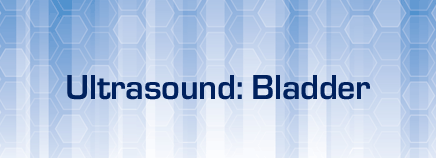
What It Is
A bladder ultrasound is a safe and painless test that uses sound waves to make images of the bladder before and after urination (peeing).
During the examination, an ultrasound machine sends sound waves into the bladder area and images are recorded on a computer. The black-and-white images show the internal structure of the bladder, as well as the amount of urine inside.
Why It’s Done
Doctors order bladder ultrasounds when there’s a concern about bladder problems, such as difficulty urinating or daytime wetting.
A bladder ultrasound can show how much urine the bladder holds when it’s full and whether someone completely empties the bladder when urinating. It can also demonstrate any obvious abnormalities of the bladder, the size of the bladder, the thickness of the bladder walls, and the presence of blockages or stones (lumps of built-up minerals). A bladder ultrasound is often done along with an ultrasound of the kidneys.
Preparation
Usually, you don’t have to do anything special to prepare for a bladder ultrasound, although the doctor may ask that your child drink lots of fluids before the exam so that he or she arrives with a full bladder. You should tell the technician about any medications your child is taking before the test begins.
Procedure
The bladder ultrasound will be done in the radiology department of a hospital or in a radiology center. Parents are usually able to accompany their child to provide reassurance.
Your child will be asked to change into a cloth gown and lie on a table. The room is usually dark so the images can be seen clearly on the computer screen. A technician (sonographer) trained in ultrasound imaging will spread a clear, warm gel on the lower abdomen over the pelvic area, which will help with the transmission of the sound waves.
The technician will then move a small wand (transducer) over the gel. The transducer emits high-frequency sound waves and a computer measures how they bounce back from the body. The computer changes those sound waves into images to be analyzed.

After the first image with a full bladder is taken, your child will be asked to empty the bladder and more images will be recorded. Sometimes a doctor will come in at the end of the test to meet your child and take a few more ultrasound pictures. The procedure usually takes less than 30 minutes.
What to Expect
The bladder ultrasound is painless. Your child may feel a slight pressure as the transducer is moved over the abdomen. Ask your child to lie still during the procedure so the sound waves can produce the proper images. The technician may ask your child to lie in different positions or hold his or her breath briefly.
Babies might cry in the ultrasound room, especially if they’re restrained, but this won’t interfere with the procedure.
Getting the Results
A radiologist (a doctor who’s specially trained in reading and interpreting X-ray, ultrasound, and other imaging studies) will interpret the ultrasound results and then give the information to your doctor, who will discuss them with you. If the test results appear abnormal, your doctor may order further tests.
In an emergency, the results of an ultrasound can be available quickly. Otherwise, they’re usually ready in 1-2 days. In most cases, results can’t be given directly to the patient or family at the time of the test.
Risks
No risks are associated with a bladder ultrasound. Unlike X-rays, radiation isn’t involved with this test.
Helping Your Child
Some younger kids may be afraid of the machinery used for the ultrasound. Explaining in simple terms how the bladder ultrasound will be conducted and why it’s being done can help ease any fear. You can tell your child that the equipment takes pictures of the bladder.
Encourage your child to ask the technician questions and to try and relax during the procedure, as tense muscles can make it more difficult to get accurate results.
If You Have Questions
If you have questions about the bladder ultrasound, speak with your doctor. You can also talk to the technician before the exam.

